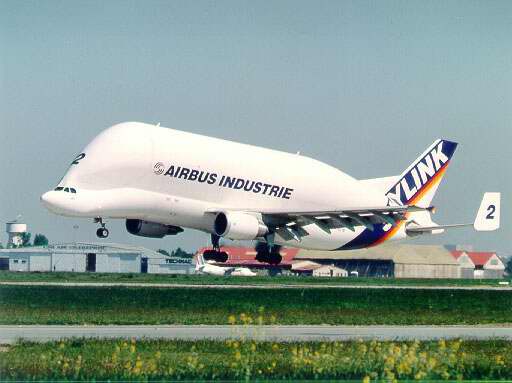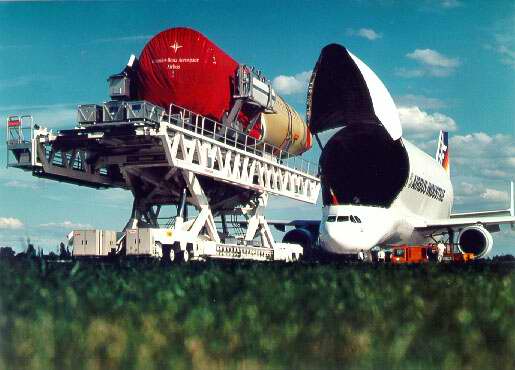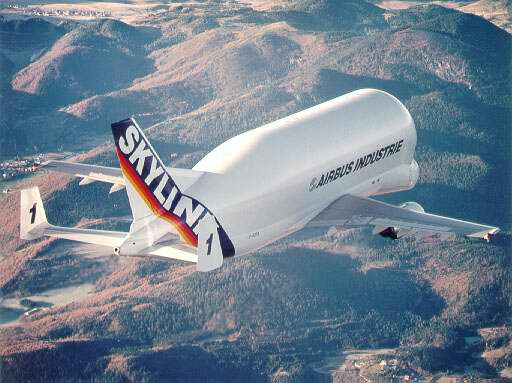


Aircraft of the Month for January 2000
SATIC A300-600ST
by Alex Stoll






History
Airbus decided to replace its long-serving Aero Spacelines Super Guppy turboprops, based on nearly fifty-year old aircraft and used to ferry subassemblies between the partner factories, with a new "Super Transporter," based on the A300-600R. The cockpit was lowered and a new upper shell with a front upward-swinging cargo door about the size of a five-story building was designed, to allow unobstructed frontal loading. Because the fuselage was so much larger than the A300, the horizontal stabilizer was equipped with additional fins and the vertical stabilizer was moved to a higher position to maintain longitudinal stability. However, the the lower half of the fuselage, the wings, the propulsion, the landing gear and the cockpit were left alone. Airbus decided on the Dasa/Aerospatiale offer on 22 August 1991, and SATIC (Special Aircraft Transport International Company) was formed in October 1991 by Dasa and Aerospatiale Matra, with headquarters in Toulouse, France. Work on the A300-600ST was carried out at Toulouse. Construction began in September 1992 and roll-out of the first aircraft was in June 1994, followed by its maiden flight on September 13, 1994. Certification was achieved in October 1995, after 335 test hours. The first Beluga entered service in January 1996. The second aircraft flew on 26 March 1996 and the third on 21 April 1997. In October 1996 Airbus Transport International was formed to carry out operations. From October 1996 the Belugas has taken over the entire transport program for Airbus major assemblies. The Super Guppy replaced in 1997 is now at the museum at the DaimlerChrysler Aerospace Airbus (Dasa) plant in Hamburg-Finkenwerder. Currently four Belugas are operational, having replaced all Super Guppies besides the one operated by NASA. The fifth will enter service at the end of 2000.
SATIC A300-600ST Specifications | |
|---|---|
| Type | Outsize-load transport aircraft |
| Powerplant | Two GE CF6-80C2 A8s, 262.2 kN (59000 lb) thrust each |
| Accommodation | Two |
| Performance | |
| Max cruise speed | Mach .7 |
| Service ceiling | 10700m (35100 ft) |
| Range at max payload | 1667 km (900nm) |
| Weights | |
| Empty | 86,500 kg (190,520 lb) |
| Max payload | 45,500 kg (100,220 lb) |
| MZFW | 133,920kg (294,975 lb) |
| MTOW | 155,138kg (341,713 lb) |
| MLW | 140,127kg (308,650 lb) |
| Max fuel | 49,600kg (109,251 lb) |
| Dimensions | |
| Wingspan | 44.84m (147ft 1in) |
| Length | 56.16m (184ft 3in) |
| Height | 17.23m (56ft 6in) |
| Wing area | 260m² (853sq ft) |
| Cargo compartment length | 37.7m (123ft 8in) |
| Cargo compartment diameter | 7.4m (24ft 3in) |
| Cargo volume | 1400 cu m |